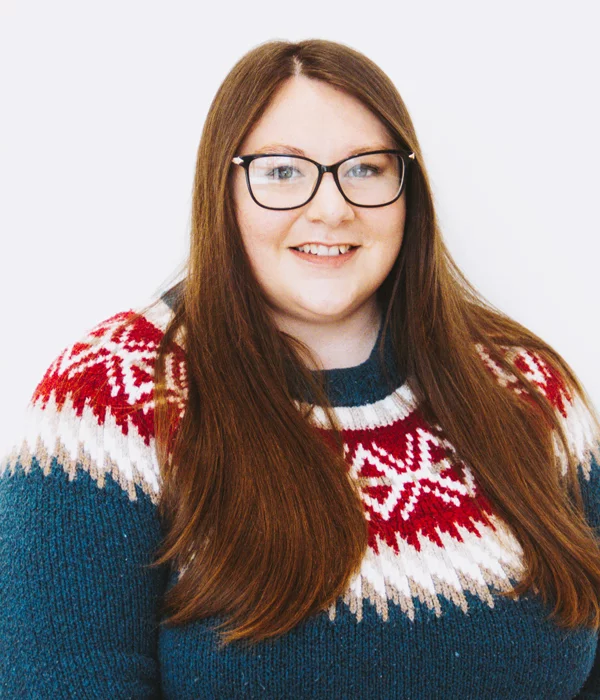Working in digital marketing means constantly striving for that perfect blend of strategy, creativity, and impact. Whether it’s web design, advertising, SEO, or social media, success hinges on not only coming up with the right concept but also executing it really well. In a rapidly evolving industry, staying innovative and effective is tough; there is immense pressure to consistently rise to the occasion and put out exceptional work that meets—or, ideally, exceeds—client expectations.
As Chris often says, we’re rarely satisfied with the work we do. Recently, we all put our thoughts on the ever-present pressures to create our very best into words, and we think they’re worth sharing.
For our design team, internal struggles largely stem from the constant need for fresh ideas while battling bouts of perfectionism on a time crunch. Those feelings can compound and lead to creative blocks or self-doubt.
“Sometimes it feels like I’m stuck with a Sisyphean task where I’m constantly pushing the metaphorical boulder of execution up the hill of perfection. Just when I think I’m about to reach the peak of a project, I reflect on what I’ve designed and find all the possible faults in it. This becomes a cycle that propels me to refine my work and try to make better designs. I also remind myself that what I see in inspiration is presented in its best light, while the less-than-perfect work likely goes unseen,” Tyler shared.
Chris echoes that sentiment. “I want Parkway to be continuously improving, so there is always a desire to make each design better than the last. That probably stems from the fact I’m rarely satisfied with anything I do. When I finish a design, I might go back to it a week or so later and make updates.”
For our content team, revisiting our work isn’t always an option. “We rarely get the opportunity to go back in a week, or a month or a year and say ‘Oh, this word would actually be better’ or ‘I’m not sure that phrase connects with the target audience as well as it could.’ We get our work done, and it’s good, but writing can always be better,” Taylor said.
Because there is a shorter refinement period for our writing, there’s a lot of pressure to put together a first draft as close to the finished product as possible. I (Summer), might get stuck in a rut where I end up rewriting a singular paragraph multiple times before I’m satisfied with it. Instead of just letting words flow as they come, I get bogged down in self-editing mode where I start to overthink each component down to the words I choose or the way I structure a sentence.
As a multi-disciplined marketer, Taylor also struggles to feel educated on best practices for all of her responsibilities. “Could I be better at SEM if I wasn’t also doing SEO, or vice versa? On the other hand, these tactics work together and managing them both benefits our clients,” she said.
Our industry is inherently ambiguous, simply because anything creative is subjective. Even though we infuse a lot of strategy and experience into our deliverables, clients also have a say in how assets representing their business look and sound.
“It’s really important that we are creating designs that are representative of Parkway’s ability [but I’ve also] learned that design is subjective, and at times, it can be a difficult line to walk. Maintaining a healthy collaborative relationship with our clients helps in that regard. At the end of the day, we want something we are proud of just as much as the client is,” Chris shared.
This is especially true in the wake of mainstream AI use. Creatives face more external pressures now than ever before; anyone can use AI tools to create images, graphics or written content in a matter of seconds. We have to prove that human creatives’ knowledge and creativity offer value to clients. Personally, I think clients (and their customers) can see the difference between raw AI-generated content and work created by real people, but it’s up to us as marketers to actively highlight and communicate that distinction through our work.
For Taylor, time is the most limiting factor in our environment. “We have to execute projects in a reasonable time and justify those costs with our clients relative to the results gained from that work.” Since client goals are often in flux, we not only have to remain agile enough to make changes but also do so without compromising execution or creativity.
While internal and external stressors don’t completely go away, our team has found ways to manage them. Here are a few approaches that have worked for us:
We make it a priority to stay up-to-date on the latest digital marketing trends and tools. For the content team, this means continually learning about SERP advancements and integrating new SEO strategies into our work. The design team, meanwhile, dedicates time to researching inspiration before each project, incorporating these influences into their personal styles.
Sometimes, productivity means taking a mental break from a particular project. A brief walk or a quick drive helps clear my head, reducing doubts and bringing fresh focus to my work. When stepping away isn’t an option, I find switching to a different project also helps keep me from getting mentally stuck.
